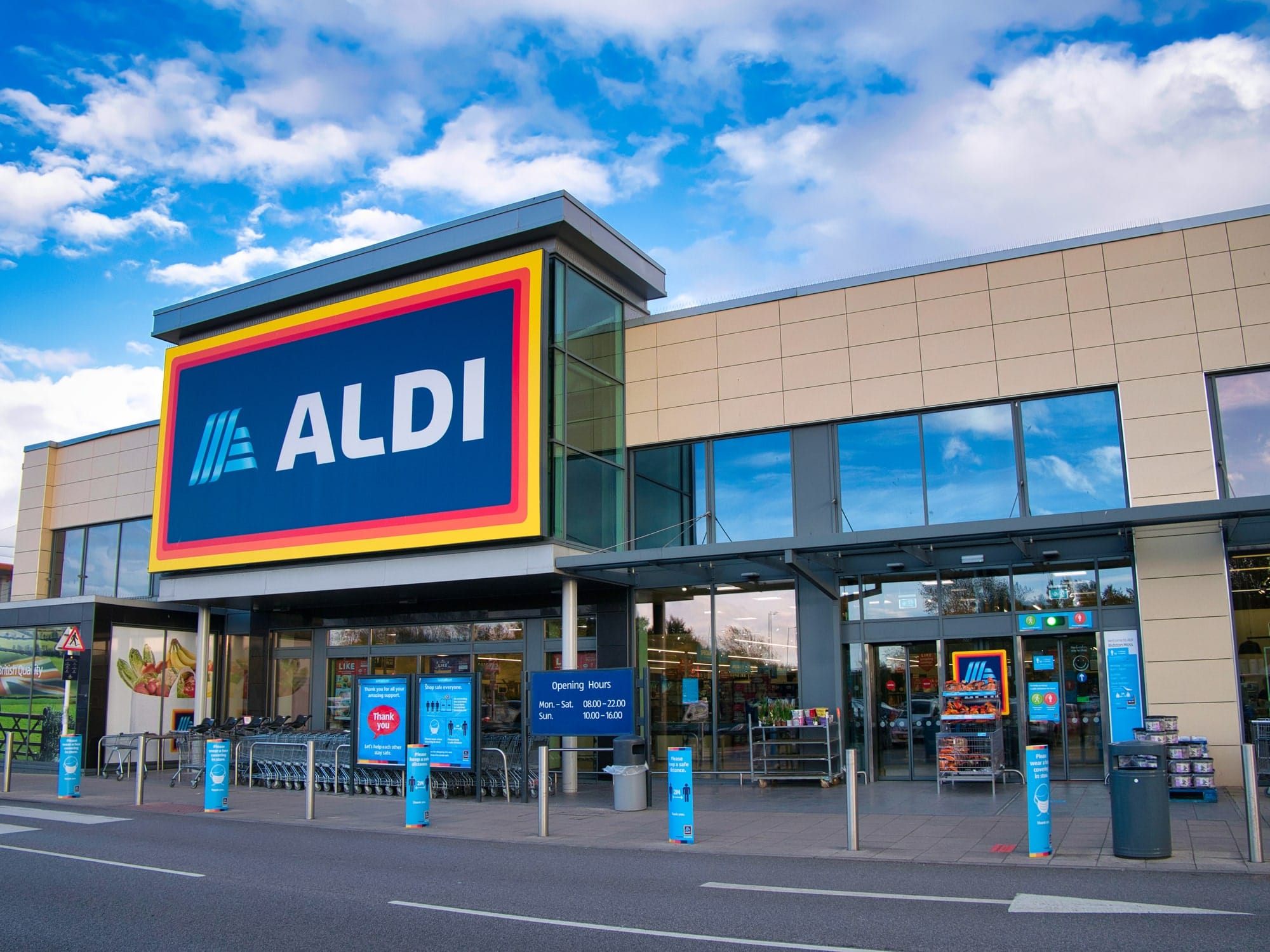Our Aldi SWOT Analysis analyzes the internal and external factors that impact the operations of one of the world's top retailing brands.
If you do groceries yourself, you must know the importance of buying groceries from a retail store at a significantly lower rate. It feels like you have accomplished something or earned money instead of spending it.
Consumers always want one thing, they want to spend less money while they expect to get the best quality products. I know this seems impossible, but what if I tell you that it's possible?
If you want to do groceries or buy things used in a daily routine, just take out your phone and see where the closest Aldi store is and go there. Aldi is one of the top retailers in the entire retailing industry.
Since Aldi offers good quality products at discounted rates to its customers, today we have decided to conduct an Aldi SWOT Analysis to analyze the internal and external factors that impact the operations of one of the world's top retailing brands.
However, before moving forward with the SWOT analysis, make sure also to check out our PESTLE analysis of Aldi. Now, let's look at Aldi's history.
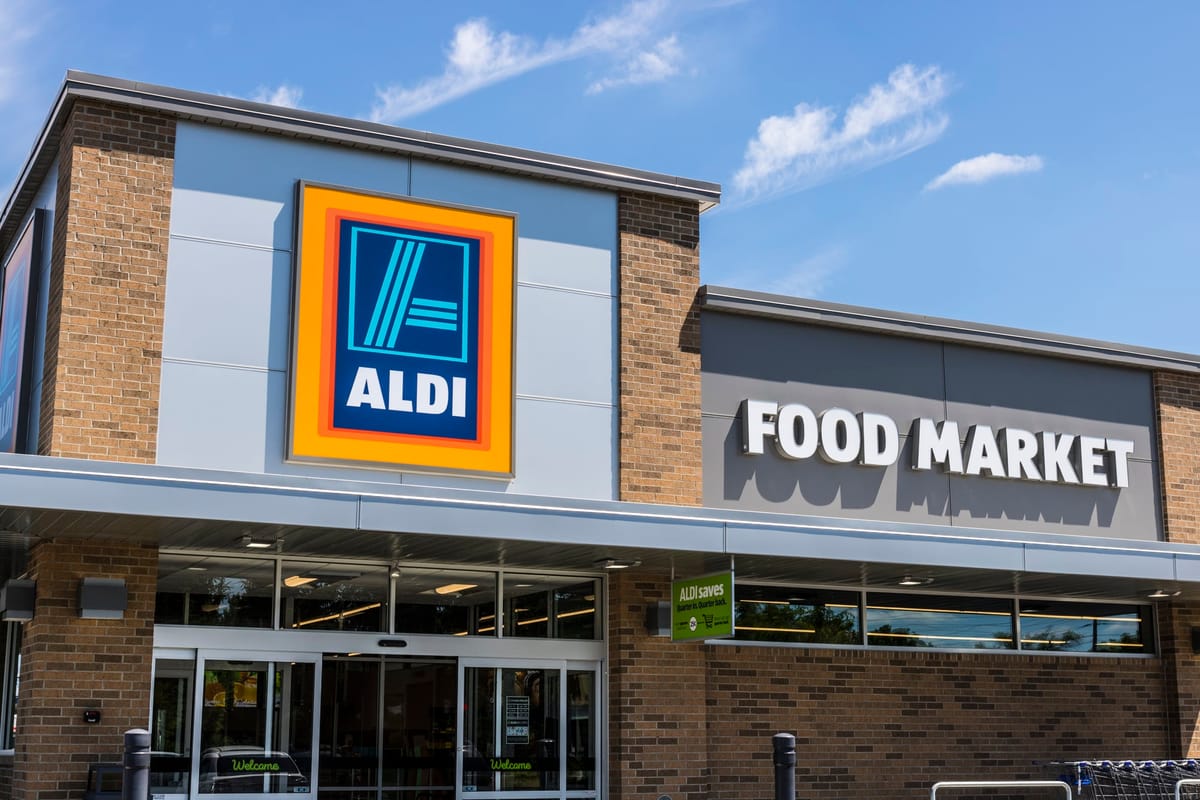
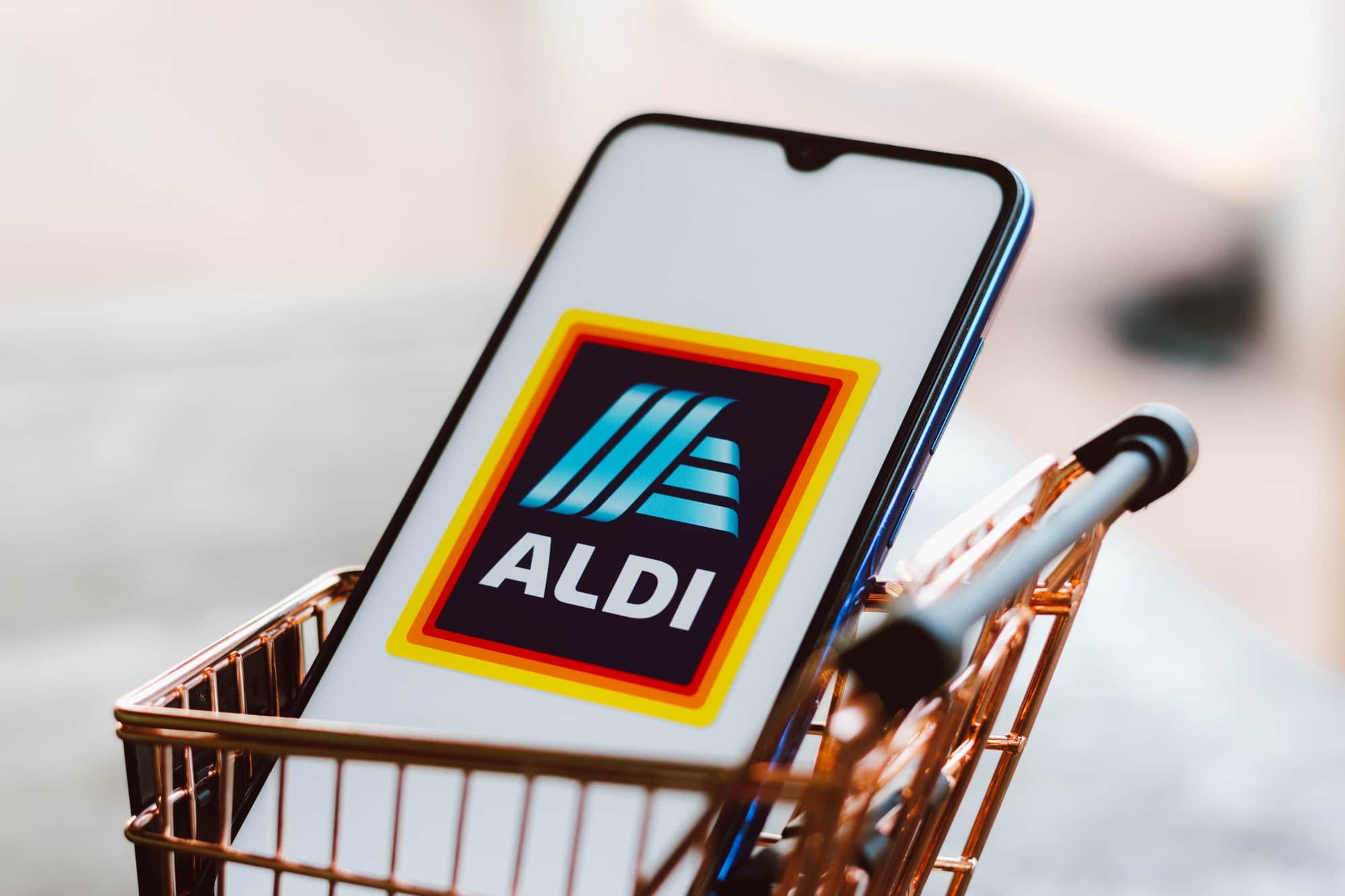
The roots of Aldi can be traced back to 1913 when a woman named Anna Albrecht opened a small retailing store in Germany.
A few decades later, both sons of Anna came forward and took over the business. They opened four more stores in Germany to spread their operations.
The retail store chain kept growing until the brothers decided to split in the 1960s. As a result of this split, two different chains came into being. One was named Aldi Nord, and the other was Aldi Sud.
Both the stores kept on growing individually. Then, they started moving their operations overseas. Aldi opened its first store in the U.S. in 1976. In the coming decades, Aldi spread its operation in Britain and the rest of Europe.
Currently, Aldi has more than 1,600 stores across 35 states of the U.S. Due to such widely spread operations, Aldi managed to generate almost $134 billion in revenue in 2021. Looking at its operations, the revenue of Aldi is predicted to increase more in the coming years.
Aldi has grown enormously over the years because it lies in the category of discount retailers. Discount retailers are retailers that offer products at lower than the actual rates. Low prices are the unique selling point of discount retailers.
Aldi being a discount retailer, makes sure it has minimum operating costs so that it can sell products at lower prices than usual to its customers. So Aldi lowers its operating costs by lowering its marketing expenditure, using minimum energy for lighting, having fewer employees, etc.
Besides providing products at discounted rates, Aldi has been adapting to customers' choices very efficiently, due to which people are attracted to Aldi.
Aldi's business model focuses on limiting operational costs so that the prices of its products can be kept lower. To ensure that the operational costs are low, Aldi keeps a limited number of products in the store.
Moreover, Aldi's prime objective is to sell products at a low price. So it also doesn't sell branded products. Instead, it sells private-label products because they are cheap.
Since now we've talked enough about the history, current operation, and business model of Aldi, let's proceed further and carry out Aldi's SWOT analysis. However, before carrying out Aldi's SWOT analysis, you need to know what SWOT analysis is.
SWOT analysis is used to analyze an organization's strengths, weaknesses, opportunities, and threats. A SWOT template highlights the internal and external factors that impact an organization's operations.
After discussing what SWOT analysis is, let's proceed further to carry out Aldi's SWOT analysis.
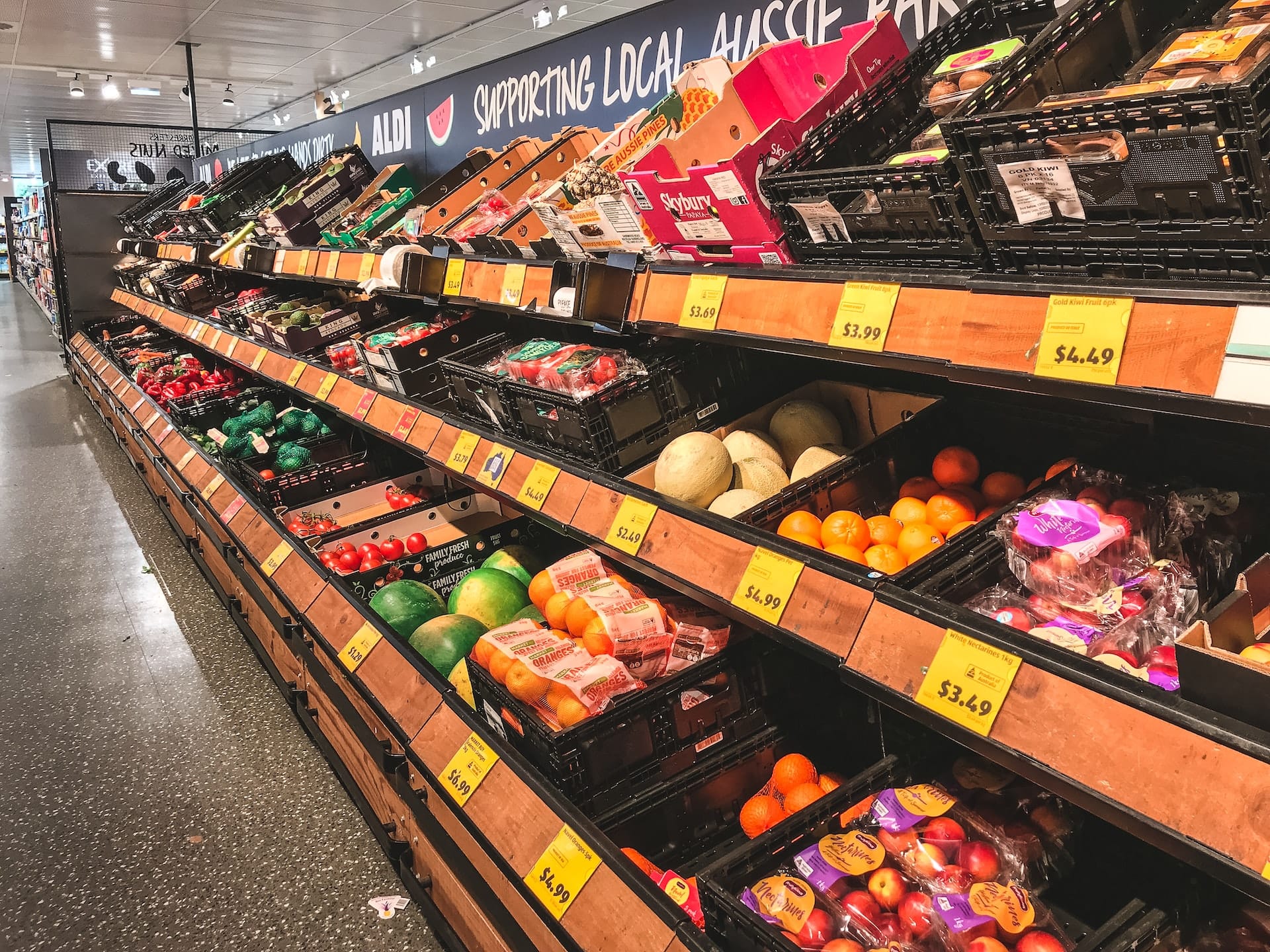
Strengths of Aldi
Strengths are the positive points that every company possesses. These positive points help an organization to compete in the market. In this section, we will be discussing some of the strengths of Aldi that help the retail company to survive in such a competitive industry.
Low Prices
Customers are always looking to switch to low-cost substitutes to save money. Therefore, low prices always attract customers, which is why discounted retail stores do well.
Chains like Aldi are successful for the same reason that you find your local independent stores. They have figured out how to eliminate the high prices and make it easy for customers to save money. Low prices make Aldi so popular among shoppers in every country across the world.
In some people's opinion, Aldi could make vast sums of money by setting the prices of its products high. But, on the contrary, others argue that keeping low prices than the entire market helps Aldi more in generating higher revenue.
High Global Presence
Brands often look for ways to increase their operations globally because having vast global operations is a sign of strength for the company. In addition, widespread global operations are always admired by brands because they increase a company's customer base, resulting in increased revenue.
Aldi has, over time, achieved a wide global presence which now poses as a strength of Aldi. For example, a small retailing store established in Germany now operates in 11 countries worldwide. Such a dominant position in the global market strengthens the operations of Aldi.
Low Number of Employees
A low number of employees poses a lot of advantages since a small workforce requires a low salary expenditure.
When you shop at Aldi, you'll often see just a couple of employees stocking the shelves. That's not nearly as much as you'll see at other supermarkets. Since Aldi doesn't need to hire and train many workers, they have low operational costs to keep their prices down.

Weaknesses of Aldi
Every brand that operates in a market has some strengths and weaknesses. As mentioned above, Aldi has some strengths. This section will take a look at the weaknesses of Aldi.
Low-Profit Margins
The prime objective of any company is to maximize profit. However, discount retailers have low-profit margins compared to regular retailing stores since they sell lower-quality products.
Since Aldi is a discount retailer, it also has low-profit margins, due to which it depends on a high number of sales to generate some profit. This can be very risky. For example, if Aldi doesn't have high traffic for some time, it can go into loss.
Unsatisfied Workforce
For any company, it is essential to have a satisfied workforce because employees are the engine that pushes the company forward.
Aldi has a large number of employees that are not satisfied with Aldi's behavior towards its employees, due to which the productivity of Aldi is decreasing. Aldi needs to have high levels of productivity to compete with other supermarkets. Therefore, employee engagement is a key factor in retaining employees.
Since Aldi pays low wages to their employees to cut their operating costs, that is why employees of Aldi remain unhappy. However, the company needs to pay their employees fairly and consistently so that they do not feel dissatisfied and decide to leave the company one day.
Lack of Geographical Presence
Brands expand their operation across the globe to capture untapped markets and increase their customer base. This, in return, increases the revenue of the company.
Aldi is a multinational brand since it has operations in 11 countries. However, Aldi mainly operates in developed countries like Britain, Germany, the U.S., etc. Aldi should expand its operations to developing countries. By tapping those markets, Aldi can increase its revenue. If Aldi wants to dominate the retailing industry, it'll have to expand more globally.
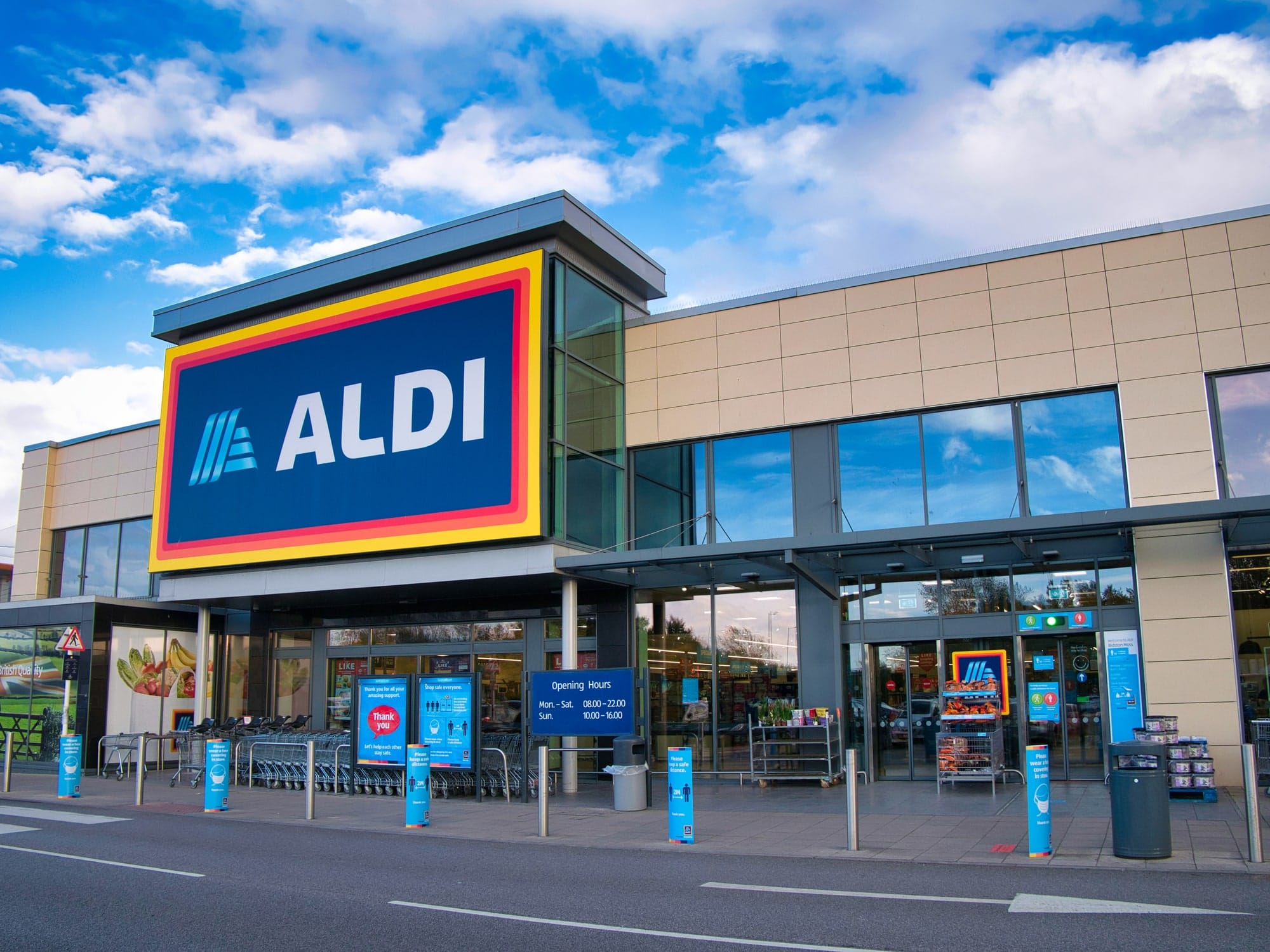
Opportunities for Aldi
Opportunities are like buses. One goes, and another arrives. However, brands need to grab those opportunities timely to make the most out of them. In this section, we will be analyzing the opportunities available for Aldi.
Expansion to Developing Economies
Big brands tend to move to developing economies since operating there benefits them. Since developing economies have high demand, any brand that moves there experiences increased sales.
Moreover, the operating costs in developing economies are meager. For example, land, labor, and capital in these economies are very cheap, due to which brands enjoy high-profit margins.
Aldi can exploit this opportunity to move to developing economies. This will help the retail brand to earn more profit and do financially well.
Diverse Portfolio
Brands always look for ways to minimize risks. One way to minimize risk is to diversify your portfolio. By doing so, brands can increase their customer base since they will now cater to customers with different demands.
Aldi has been offering the same service for more than a century now. Although it has expanded its operations over the years, its only source of revenue is retailing services.
Aldi can do vertical and horizontal expansion to diversify its portfolio. For example, it can launch its own food and beverages brand that will provide products at lower than the market price. By doing so, Aldi can increase and diversify its sources of revenue.
Mergers and Acquisition
Brands are always looking for ways to penetrate the market and expand their operations. One of the most common ways to achieve growth is to form mergers and acquire pre-existing companies.
Aldi can also form mergers with some retail stores to improve its performance. Moreover, it can acquire smaller brands in the retailing industry to increase its customer base and penetrate the market.
Threats Faced by Aldi
Different companies face different types of threats from the external environment. To grow and succeed in the future, companies have to counter these threats timely. This section will analyze some of the threats Aldi faces.
High Competition
The retail industry is one of the industries in which a high level of competition exists. In this industry, buyers have a lot of power since the products every retail store sells are similar. Moreover, due to low switching costs, customers always switch to stores that offer better deals.
Aldi has to fight with hundreds of well-established brands to function in the retailing industry. Brands like Walmart and Tesco give a tough time to Aldi. Besides that, after the rising trend of e-commerce, Amazon also poses a threat to Aldi.
Recession
After the adverse effects of the pandemic on the economy and the conflict between Russia and Ukraine, economists are anticipating a global recession. A recession is always very damaging for businesses since they observe a fall in their revenue in case of a recession.
If there is a recession, the sales of Aldi will fall drastically, and if things get out of hand, Aldi might get pushed out of the retailing industry.
Technological Innovation
It is assumed that technological advancements are beneficial for everyone. However, that's not always the case. At times technological innovation benefits some and damages others.
As we observe technological growth daily, Aldi faces a significant threat from technological innovation. Suppose online platforms like Amazon emerge in case of technological advancements. In that case, the sales of Aldi will drop since customers would immediately shift to online platforms since they seem more convenient.
Aldi SWOT Analysis: Final Word
Aldi is a discount retailer that offers products at discounted rates. The roots of this renowned retailer can be traced back to 1913 when a woman opened a retail store in Germany.
From there onwards, the store kept growing and spreading its operations throughout Germany. After a few decades, Aldi decided to move its operations abroad. Currently, Aldi operates in 11 countries and generates $134 billion in revenue from all over the world.
In this article, we carried out Aldi's SWOT analysis to identify the internal and external factors that affect the operations of Aldi. The SWOT Matrix helped us identify the strengths, weaknesses, opportunities, and threats faced by Aldi, which can also be presented as a SWOT table.
This article gave you a complete insight into Aldi. Moreover, it also made you aware of how to conduct a SWOT analysis. If you have any confusion regarding how SWOT analysis is carried out, look at some SWOT examples.


